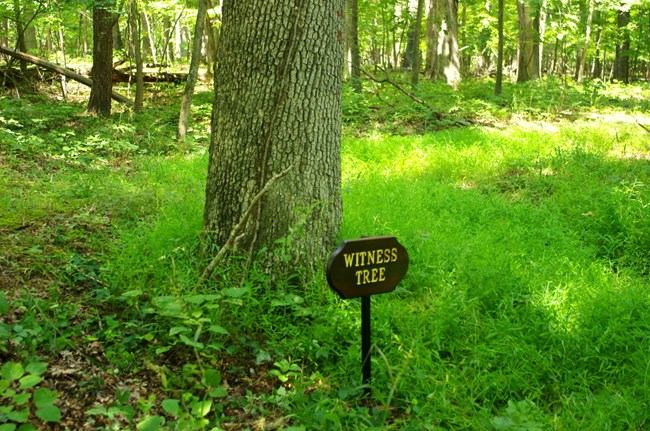Last updated: May 4, 2022
Article
Structural Values of Urban Forests

Urban forests have both structural value and functional value. The previous webpages covered the functional values of trees, otherwise known as the benefits trees provide like removing air pollution and filtering runoff. However, trees also have structural values derived from the formation of the plant itself.
A tree’s structural value can be thought of as the cost of having to replace a tree with a similar tree. It can be calculated with factors like the tree trunk area and the tree’s health condition. That data, also known as the compensatory value, can be used to measure the costs inflicted by catastrophic events such as wildfires or pest infections in their destruction of trees. A 2002 study from the USDA Forest Service estimates the total structural value of all urban forests on the continental U.S. to be about $2.4 trillion.

NPS Photo
Explore some of the intrinsic values of the National Capital Area in the Valuing Trees and Forests StoryMap, created in partnership between researchers at the Virginia Polytechnic Institute and State University and UERLA. The notable trees at National Mall and Memorial Parks, Rock Creek Park, and Monocacy National Battlefield, provide valuable cultural and historical meaning to their urban forests.
Potential Pest Impacts
Various insects and diseases can infest urban forests, potentially killing trees and reducing the health, structural value and sustainability of the urban forest. As pests tend to have differing tree hosts, the potential damage or risk of each pest will differ between tree species. Climate change increases native plants’ vulnerability to pests due to weakening from climate-induced stressors, increased survival of destructive pests, and spread of invasive plant species: Plants and Climate Change.In a healthy and resilient forest system, however, iTree Eco and iTree Hydro models show rapid recovery after pest and other losses. Other trees fill in lost ecosystem services as they continue to grow. Within the following 30 years, ecological benefits are pre-loss levels.
Next page: Other Tree Benefits
Previous: Avoided Runoff

References
Ferguson, K. (2017). UERLA Resource Brief: Ecobenefits of National Capital Region Park Trees. Retrieved from https://irma.nps.gov/DataStore/Reference/Profile/2290091.
Gallagher, A. M. (2021). Strategic Approaches to Tree Management Can Promote Climate Resiliency and Protect Ecosystem Services.
Garner, J. (2018). UERLA Resource Brief: Quantifying Ecological Benefits of Trees in the National Capital Region. Retrieved from https://irma.nps.gov/DataStore/Reference/Profile/2290092.
National Park Service. (2018). Witness Trees. Retrieved from https://www.nps.gov/mana/learn/nature/witness-trees.htm
Nowak, D. J., Crane D.E., & Dwyer J.F. (2002). Compensatory value of urban trees in the United States. Retrieved from https://www.fs.usda.gov/treesearch/pubs/15522
Sherman, H. (2020). UERLA Presentation: Forecasting Changes in Population Demographics and Forest Benefits in NCR Parks Using iTree Eco. Spotlight on National Park Resources in the National Capital Area. Washington D.C.
Urban Ecology Research Learning Alliance. (2018). i-Tree Ecosystem Analysis: Urban Forest Effects and Values. Retrieved from https://irma.nps.gov/DataStore/Reference/Profile/2290090.
Tags
- antietam national battlefield
- chesapeake & ohio canal national historical park
- george washington memorial parkway
- harpers ferry national historical park
- manassas national battlefield park
- national capital parks-east
- prince william forest park
- wolf trap national park for the performing arts
- uerla
- rlc
- trees
- urban forest
- forest
- ecosystem services
- park science
- nca
- ncr
- invasive pests
- invasive insects
- witness tree
- witness trees
